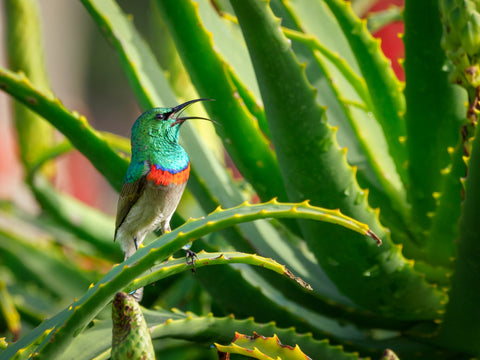Photographing Hummingbirds: Techniques for Capturing Their Ephemeral Beauty
In this blog post you'll learn tips and tricks on how to taking breathtaking hummingbird photographs, and much more.
The flutter of iridescent wings, the delicate hum in the air – capturing the beauty of hummingbirds through the lens of a camera is a thrilling endeavor for photographers.

These tiny avian wonders possess a unique allure, but their rapid movements and elusive behavior can make photographing them a challenging yet rewarding experience. If you're eager to embark on this enchanting photographic journey, here are some techniques to help you capture the ephemeral beauty of hummingbirds.
Choose the Right Equipment
Before you head out to photograph hummingbirds, it's essential to have the right gear. A camera with manual settings and interchangeable lenses is preferable for greater control over your shots. A telephoto lens with a focal length between 200mm and 600mm will allow you to capture close-up shots without disturbing the birds. A tripod or monopod will help stabilize your camera, especially when using longer lenses.
Want to attract more hummingbirds? Checkout this best selling hummingbird feeder.
Create an Attractive Setup
Hummingbirds are attracted to brightly colored flowers and feeders filled with nectar. To increase your chances of capturing these elusive birds, set up an enticing environment. Place colorful flowers or feeders in a location with good natural light. Using a shallow depth of field to blur the background can make the hummingbird stand out more prominently in your shots.
Bring your love inside with one of our hummingbird canvases.
Patience is Key
Photographing hummingbirds requires patience and persistence. These birds are known for their rapid movements and erratic flight patterns, making it challenging to predict their behavior. Spend time observing their habits and flight paths to anticipate their movements and positioning. A comfortable chair or cushion can make long hours of waiting more enjoyable.

Optimize Camera Settings
To freeze the rapid motion of hummingbirds, adjust your camera settings accordingly. Use a fast shutter speed (at least 1/1000 or higher) to capture their wings in sharp detail. Set your camera to continuous or burst mode to capture a series of shots in quick succession. Consider using aperture priority mode (usually denoted as "Av" on your camera) to control the depth of field and allow the camera to adjust the shutter speed accordingly.
Focus on Autofocus
Given the hummingbird's rapid movements, using autofocus is crucial. Set your camera's autofocus to track moving subjects, often labeled as "AI Servo" on Canon cameras or "AF-C" on Nikon cameras. This mode helps your camera continuously adjust focus as the hummingbird moves, ensuring your shots remain sharp.
Looking for the perfect gift? Why not a hummingbird necklace.
Frame Creatively
When composing your shots, consider different angles and perspectives. Experiment with various compositions, such as capturing the bird in profile, while feeding, or in flight. Incorporating elements of the environment, such as flowers or branches, can add depth and context to your images. Be patient and wait for the perfect moment when the hummingbird's pose and the background align harmoniously.
Lighting Matters
Lighting plays a crucial role in photography, and hummingbirds are no exception. Shooting during the golden hours of early morning or late afternoon provides soft, flattering light that enhances the bird's colors. Overcast days can also be advantageous, as the clouds act as natural diffusers, minimizing harsh shadows and creating a more even lighting situation.

Be Mindful of Ethical Photography
While capturing captivating shots is the goal, it's essential to prioritize the well-being of the birds and their habitats. Avoid getting too close to their nests or feeders, as this can disturb their natural behavior. Use your presence to educate others about the importance of conserving these delicate creatures and their environments.
Post-Processing Magic
Once you've captured your hummingbird shots, post-processing can help enhance their visual appeal. Adjusting contrast, saturation, and sharpness can bring out the vibrant colors and intricate details of the birds. Be cautious not to over-edit, though, as natural beauty often shines brightest.
Here's the perfect hummingbird swing to help you capture these amazing creatures.
A Journey of Delicate Beauty
Photographing hummingbirds requires a blend of technical skill, patience, and artistic vision. As you embark on this journey to capture their ephemeral beauty, remember that every shot you take is a tribute to the delicate wonders of nature. Through your lens, you can freeze these fleeting moments, allowing others to marvel at the intricacies of these tiny creatures.
From selecting the right equipment to honing your camera settings and perfecting your timing, photographing hummingbirds is a skill that demands both dedication and an appreciation for the delicate dance of life. As you immerse yourself in this world of wings and nectar, you'll discover a newfound admiration for the enchanting world of hummingbirds.

